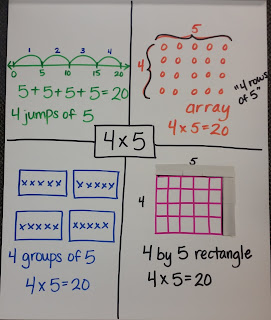"My 20+20 is different than her 20+20"

If you teach math and are not doing number talks in your classroom, you and your kiddos are missing out! If you're looking for high engagement, mathematical discourse, risk taking and deep student thinking, number talks are the ticket. Simply put, "Number talks are 5-15 minutes classroom conversations around purposefully crafted computation problems." ~Sherry Parrish The name "number talks" is fitting because it means engaging students in, you guessed it, talking about numbers. The goal of number talks is computational fluency, and this is furthered by students using mental math to become more flexible and efficient in their problem solving. I have been so lucky this year to support teachers in bringing number talks into their classroom. I've gotten to train teachers, demonstrate number talks as a guest teacher, and watch teachers hone their own practice in their classrooms. A few weeks ago, I had the pleasure of working with a 4th grade class on a num


